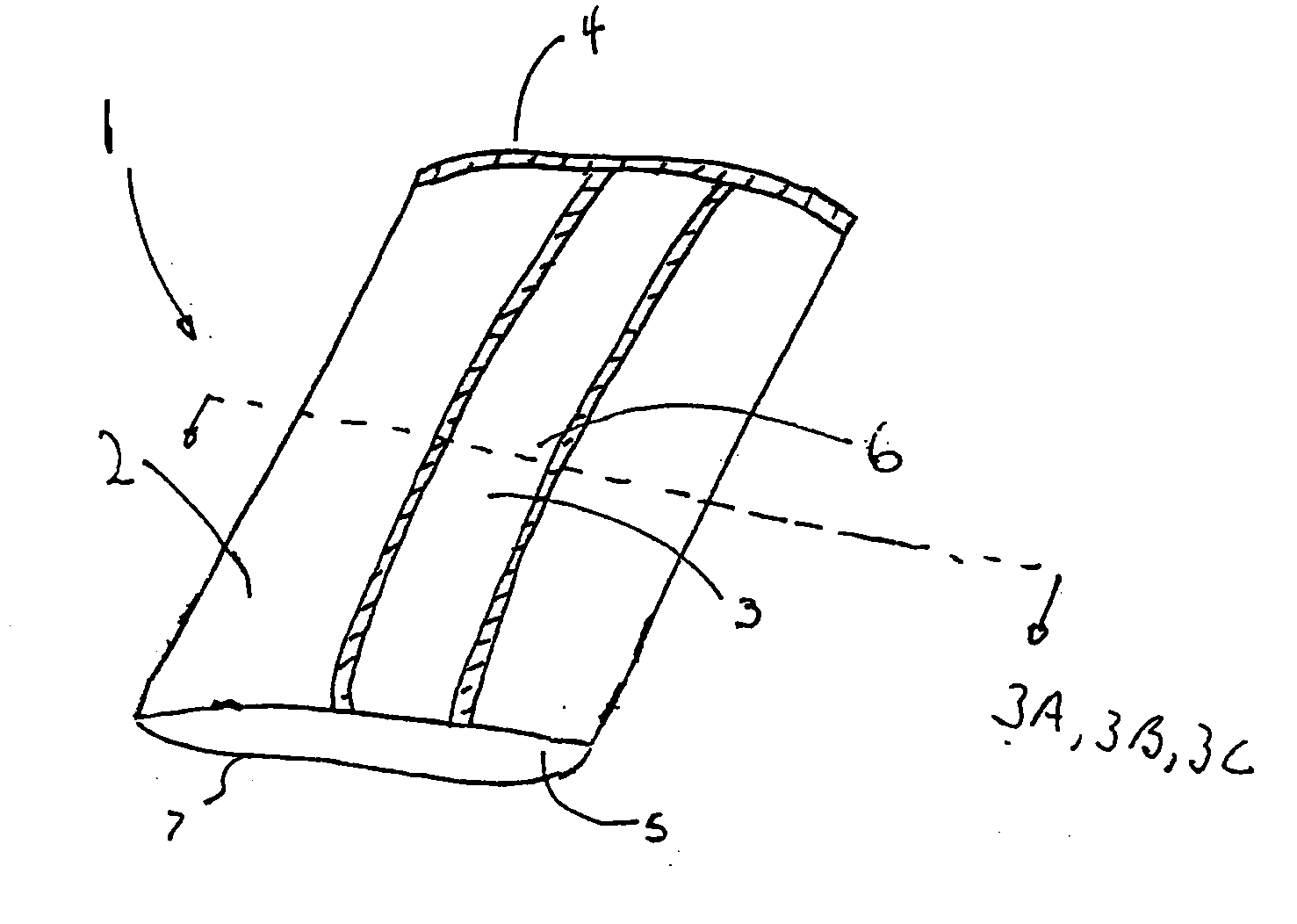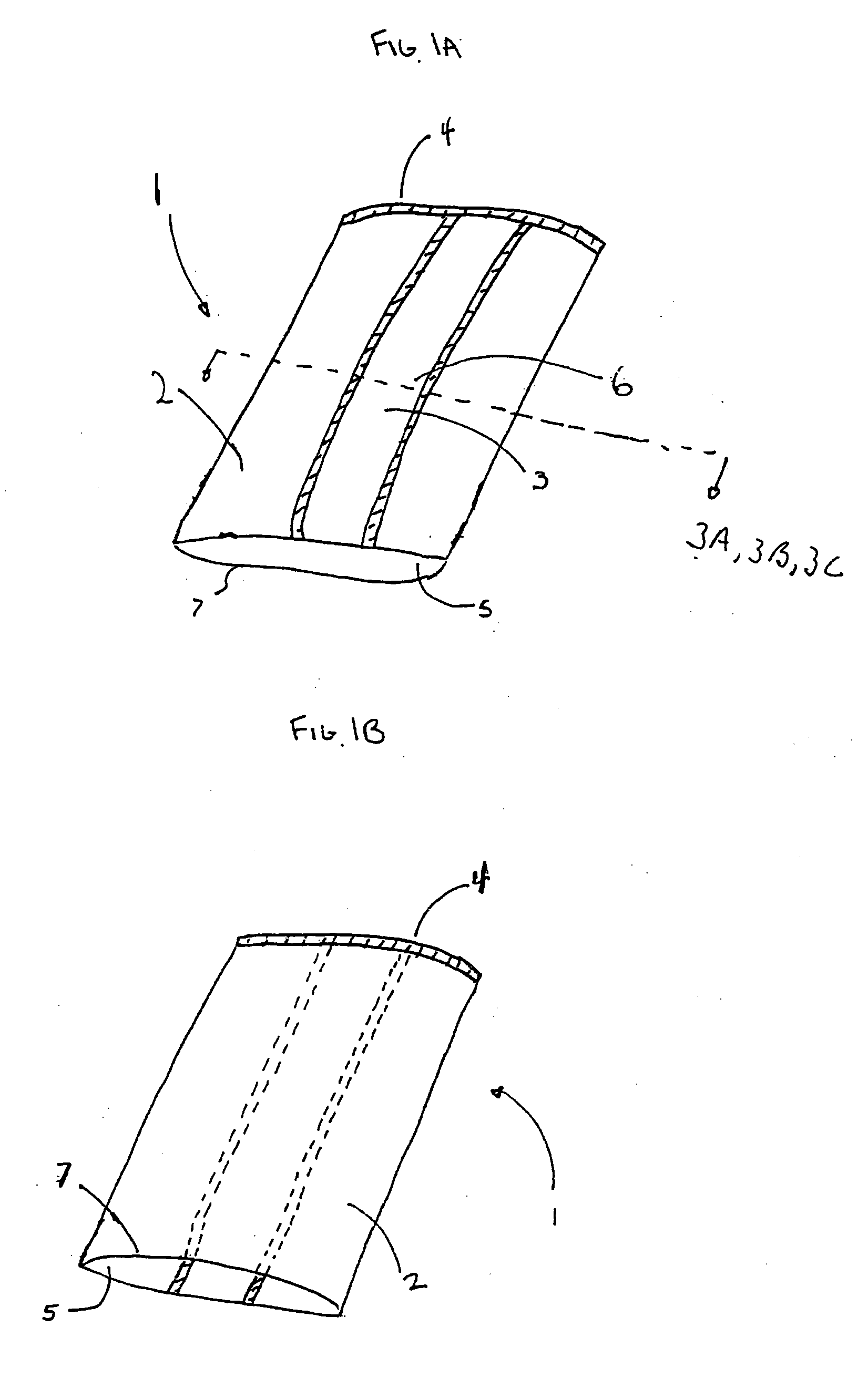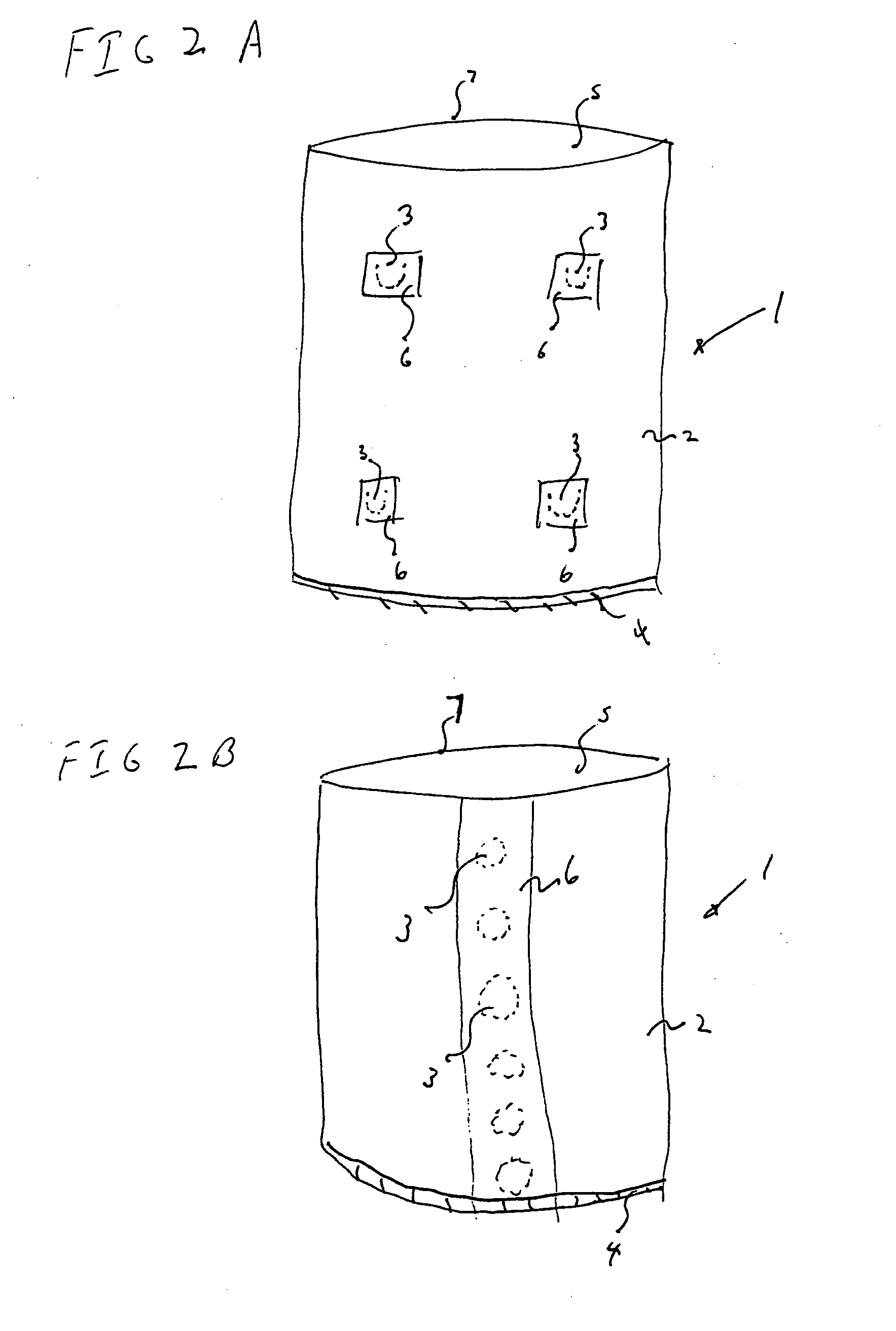High temperature venting bags
a venting bag and high temperature technology, applied in the field of bags, can solve the problems of many adhesives that are not suitable for many adhesives are incompatible with high temperature cooking applications, and many adhesives are unsuitable for food products, so as to increase the salable weight of meat and achieve the effect of meat yield
- Summary
- Abstract
- Description
- Claims
- Application Information
AI Technical Summary
Benefits of technology
Problems solved by technology
Method used
Image
Examples
example 1
[0079] Four films, Test Film A, Test Film B, Test Film C, and Test Film D, were prepared and heat sealed to determine (a) seal strength at room temperature using ASTM F88-00, and (b) cooking temperature at which a heat seal failed. Test Film A, a first thermoplastic film used to make bag sidewalls, was a 1.0 mil biaxially oriented monolayer thermoplastic polymer composed of 75% by weight of polyester homopolymer and 25% by weight polyester elastomer. Test Film A had 25% shrink in the machine direction and 30% shrink in the transverse direction at 212° F. Test Film A had a vicat softening point above 400° F. Test Film A is commercially available from M & Q Packaging Corp., Schuylkill Haven, Pa.
[0080] Test Film B, a second thermoplastic film used to make vent seals, was a biaxially-oriented bi-layer film composed of a 0.75 mil first layer of polyester homopolymer, and a second layer of heat sealable polymer. Test Film B did not exhibit measurable ability to shrink at elevated tempera...
example 2
[0086] Each of the four co-joined film samples were hung in a conventional oven. A single eight-ounce weight was suspended from each sample in order to provide a separation force. The oven was activated, and the interior temperature was increased in 25° F. increments every half-hour, to a maximum temperature of 400° F., while the film samples were observed. The temperature at which the films parted was noted, and the results are provided in Table 3, below.
TABLE 3Temperature At WhichSeal TypeFailure OccurredTest Film A to Test Film B100°F.Test Film A to Test Film C150°F. to 175° F.Test Film A to Test Film D250°F.Test Film A to Test Film A>400°F. (no failure)
[0087] The results indicated that while Test Film A-Test Film A and Test Film A-Test Film C combinations displayed a similar baseline seal strength, at elevated temperatures the seal in the latter combination failed at a lower temperature compared to the seal between two strips of Test Film A. Thus, the rupture of heat seals at ...
PUM
| Property | Measurement | Unit |
|---|---|---|
| Temperature | aaaaa | aaaaa |
| Temperature | aaaaa | aaaaa |
| Temperature | aaaaa | aaaaa |
Abstract
Description
Claims
Application Information
 Login to View More
Login to View More - R&D
- Intellectual Property
- Life Sciences
- Materials
- Tech Scout
- Unparalleled Data Quality
- Higher Quality Content
- 60% Fewer Hallucinations
Browse by: Latest US Patents, China's latest patents, Technical Efficacy Thesaurus, Application Domain, Technology Topic, Popular Technical Reports.
© 2025 PatSnap. All rights reserved.Legal|Privacy policy|Modern Slavery Act Transparency Statement|Sitemap|About US| Contact US: help@patsnap.com



